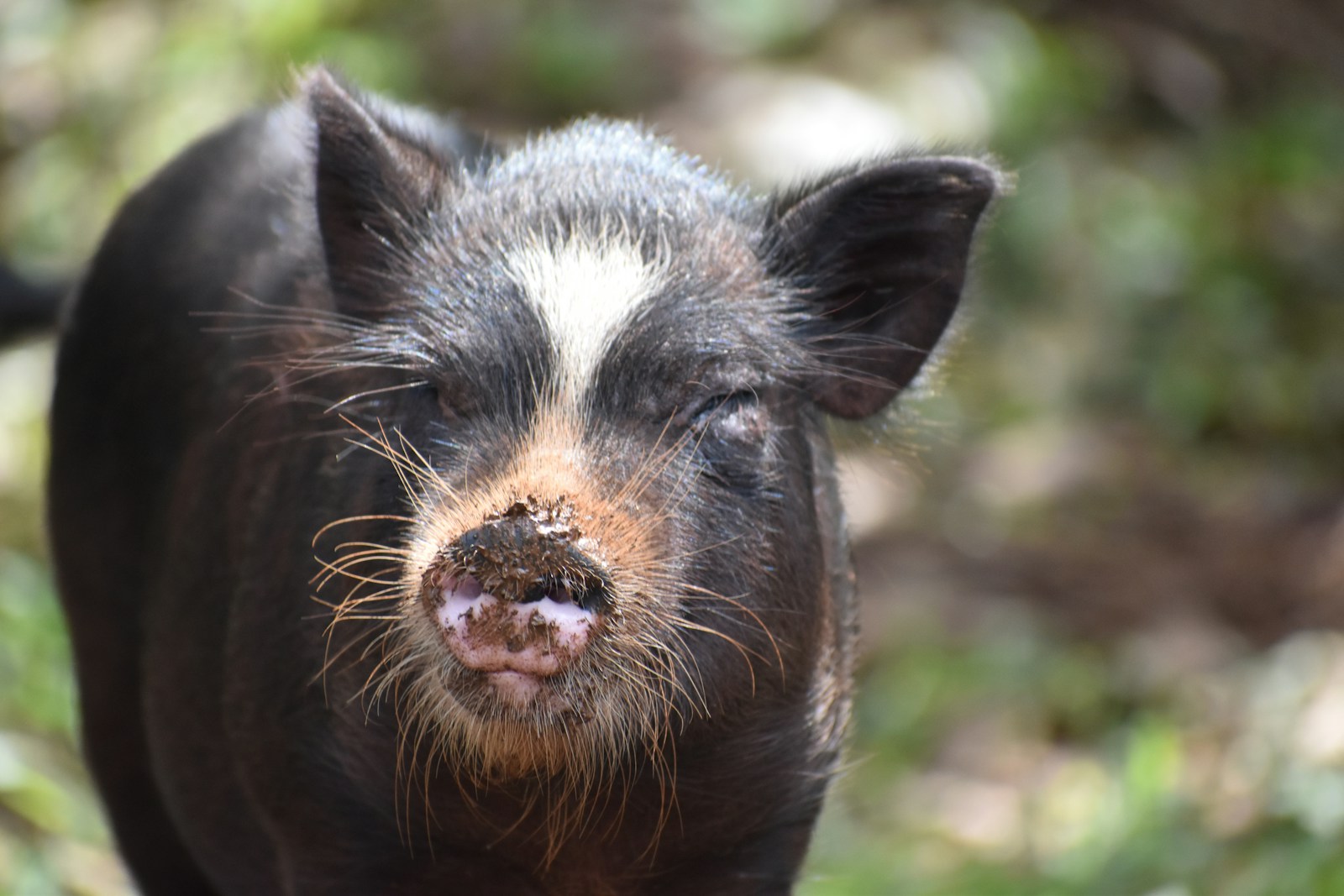
cerdo

pig
A pig is a domesticated large and stout-bodied animal with a thick bristly skin, a long flexible snout, and a tail. Pigs are kept as livestock mainly for their meat (pork).
Example sentences using: cerdo
El cerdo come manzanas.

The pig eats apples.
Here we see 'cerdo' in a sentence about daily activities, which are very important in language learning.
Me gusta la carne de cerdo.

I like pork.
In this sentence, 'cerdo' is used in the context of food, referring to the meat of a pig, which is called 'pork' in English.
El cerdo tiene mucho hambre.

The pig is very hungry.
In this sentence, 'cerdo' is used to refer to an individual animal and describe its condition ('has a lot of hunger').
La granja tiene un cerdo.

The farm has a pig.
This phrase introduces possession ('tiene') and uses 'cerdo' to refer to a farm animal.
El cerdo tiene miedo.

The pig is scared.
This sentence uses 'cerdo' to show an emotion (fear), specifically 'miedo' which means scared.
No me gusta el cerdo encebollado.

I don't like the onion pig.
In this context, 'cerdo encebollado' refers to a specific dish made of pork and onions.
El cerdo duerme mucho.

The pig sleeps a lot.
In this example 'cerdo' is part of a sentence that describes a routine activity.
Mi cerdo está enfermo.

My pig is sick.
In this sentence, 'cerdo' is referred to with possessive pronouns ('mi' - my), explaining to learners how to express possession with animals or belongings.
El cerdo tiene hambre

The pig is hungry
This phrase uses 'tener' (to have) to express feelings, a common usage in Spanish. 'Hambre' translates to 'hunger'; so 'tiene hambre' translates directly to 'has hunger', the Spanish way of saying 'is hungry'.
Este cerdo es gordito.

This pig is chubby.
This example uses the word 'cerdo', which translates to 'pig' in English. It's part of a simple descriptive sentence.
El cerdo está en el granero.

The pig is in the barn.
This phrase introduces location expressions, using the word 'cerdo' and the phrase 'está en el granero', which means 'is in the barn'.
Mi cerdo es grande

My pig is big
This phrase demonstrates possession and adjectives. 'Mi' translates to 'my', and 'grande' to 'big'.
El hombre come cerdo

The man eats pork
This phrase demonstrates how Spanish speakers do not distinguish between pig as an animal and pork as food. 'Come' is the Spanish verb for 'eats'.
El cerdo es rosado

The pig is pink
This phrase is helpful for learning colors. 'Rosado' means pink in Spanish. Here, 'es' is the verb to be, which in this case is used to describe characteristics.
El perro persigue al cerdo

The dog chases the pig
This phrase proves useful for action verbs. 'Persigue' is the third-person singular of 'perseguir', meaning 'to chase'. 'Al' is a contraction of 'a' (to) and 'el' (the), often used before singular, masculine nouns.
Yo veo un cerdo

I see a pig
This phrase illustrates the first person singular form 'veo' of the verb 'ver', which means 'to see'. 'Un' is the indefinite article in Spanish for masculine singular nouns.
El cerdo es gordo

The pig is fat
This phrase is helpful to learn about adjectives. 'Gordo' translates to 'fat'. Just like in the third example, 'es' is used as the verb to be due to it describing a characteristic.
El cerdo está comiendo

The pig is eating
This sentence uses the present progressive tense, which is formed with 'estar' (to be) + gerund. 'Comiendo' is the gerund of 'comer' (to eat). Unlike English, in Spanish, the present progressive is only used to express an action that is in progress at the moment of speaking.
El cerdo duerme en el establo

The pig is sleeping in the stable
This sentence is helpful to learn places and action verbs. 'Duerme' is the third person singular of the verb 'dormir', meaning 'to sleep'. 'Establo' translates to 'stable'.
El cerdo está en el corral

The pig is in the pen
This phrase helps to learn about positioning. 'Está' is the Spanish verb for 'is' used when referring to location, and 'corral' translates to 'pen' or 'enclosure'.